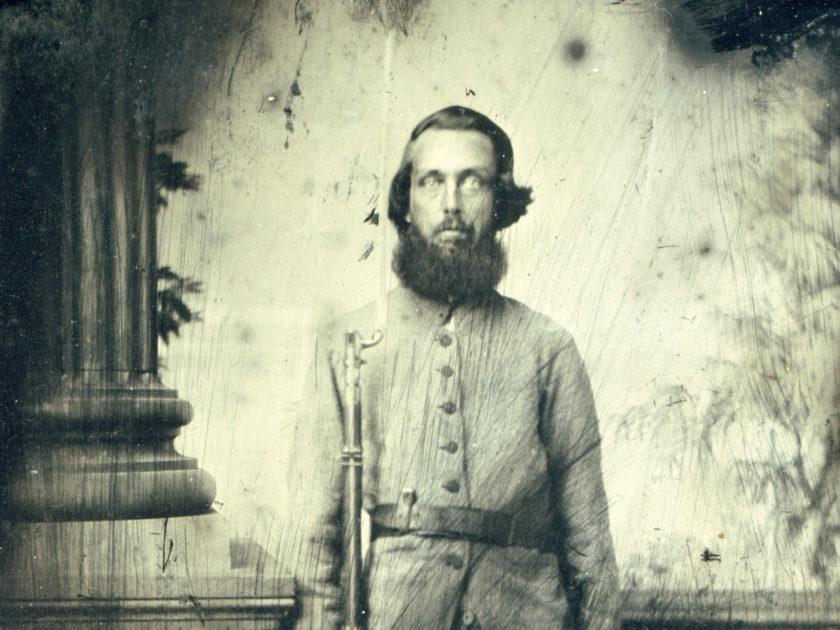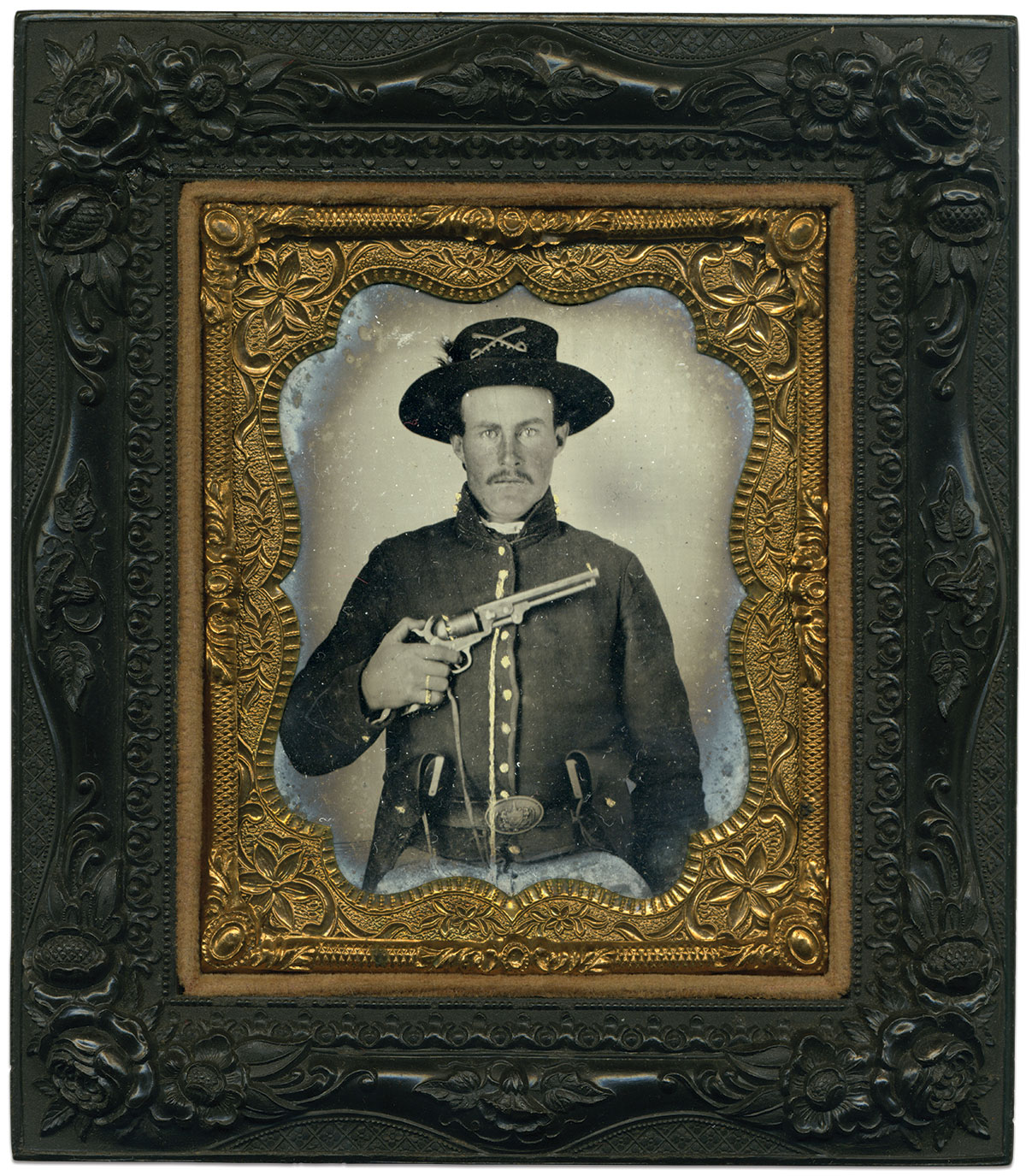
The distinctive state seal of Arkansas is visible in sharp relief on the belt buckle worn by this trooper who wields a Colt revolver. Only a handful of these buckles survived the war, and this is the only wartime image of it known to exist at this time. The trooper’s uniform is federal: Pattern 1858 Hardee hat with plume and crossed sabers, issue Cavalry shell jacket with 12-button front and tall stand-up collar with two buttons and chevrons on the cuffs, and sky blue trousers. How he came to possess the Confederate buckle is a matter of conjecture. He may have captured it, or the buckle and the rest of the belt rig may be a photographer’s prop.
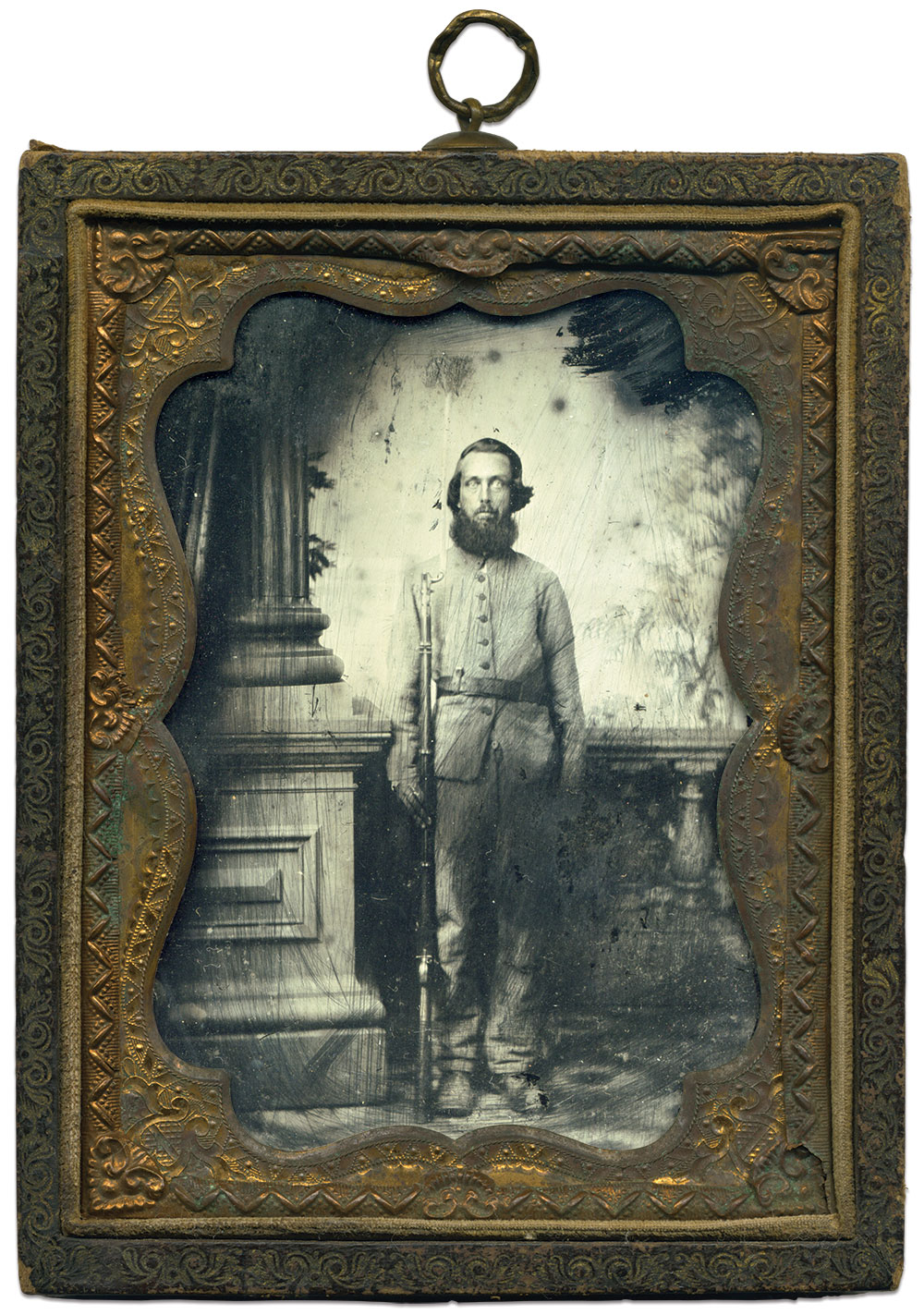
An enlisted man from South Carolina, top right, stands at attention with his Model 1853 Enfield rifle musket. The column and backdrop appear in portraits made by Charles J. Quinby, a talented photographer who came up in the ranks of New York daguerreotypists in the 1850s. He moved to Charleston, S.C., and established a studio shortly before the war.

A sergeant, above, who enlisted in the “Gaines Warriors,” which became Company A of the 24th Mississippi Infantry, stands in front of a simple canvas backdrop. He holds a Model 1816/1822 musket converted from its original flintlock configuration to percussion. The sword at his side appears to be of the militia type and not standard issue.

This cavalryman brandishes a rare Nashville Plow Works saber in one gloved hand and a Colt Model 1851 Navy revolver in the other. A second Colt Navy is placed in his waist belt. His light gray jean-cloth shell jacket, or Western Depot jacket, appears hand-sewn. His slouch hat is of a civilian style, purchased in bulk by Confederate quartermasters.
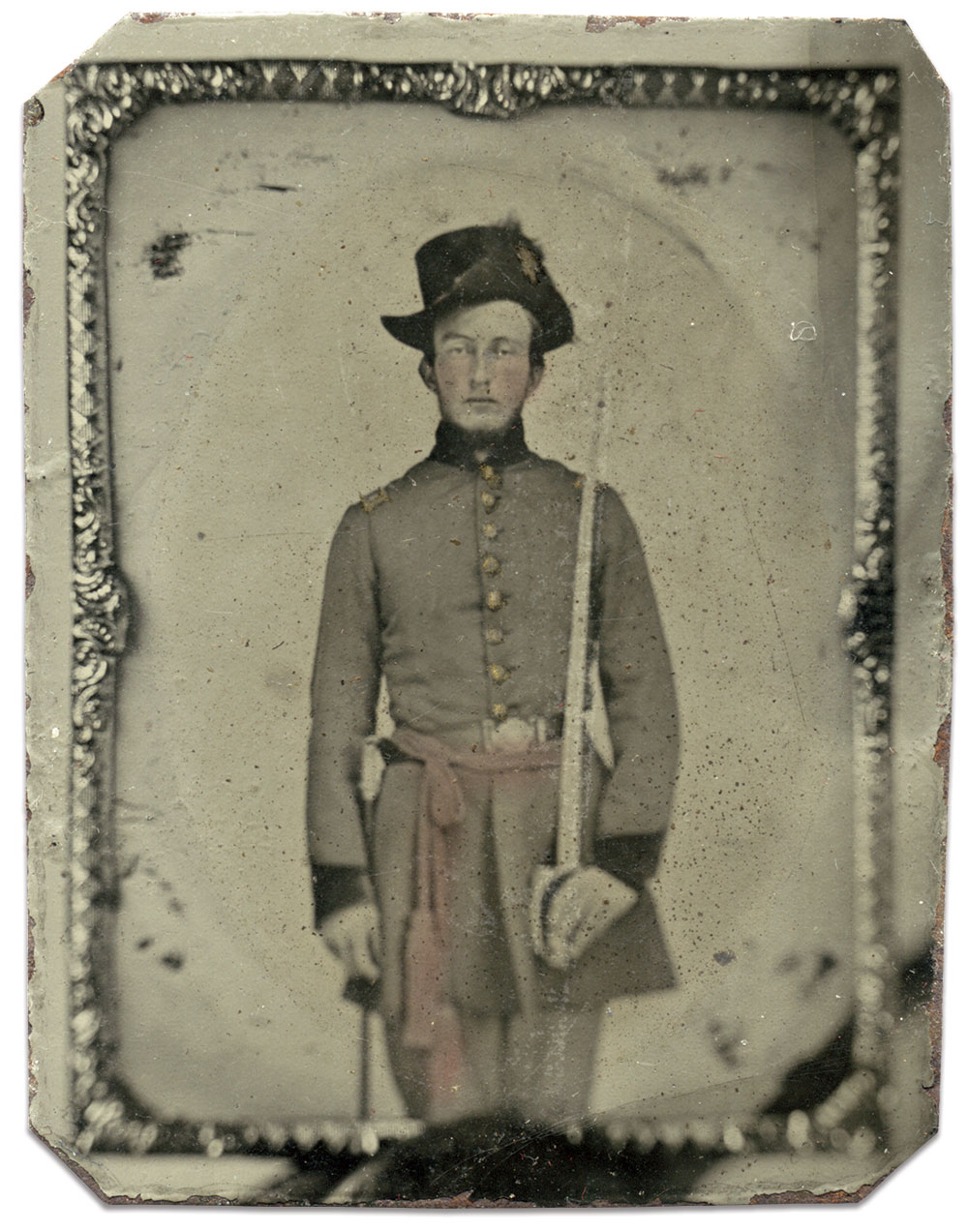
This tintype copy of an early war Southern soldier, right, was expertly produced—note the focal quality and the alignment of the original frame. All the more remarkable, the photographer appeared to execute this while holding the image against a wall, as evidenced by his thumb and index finger visible at the bottom of the image.
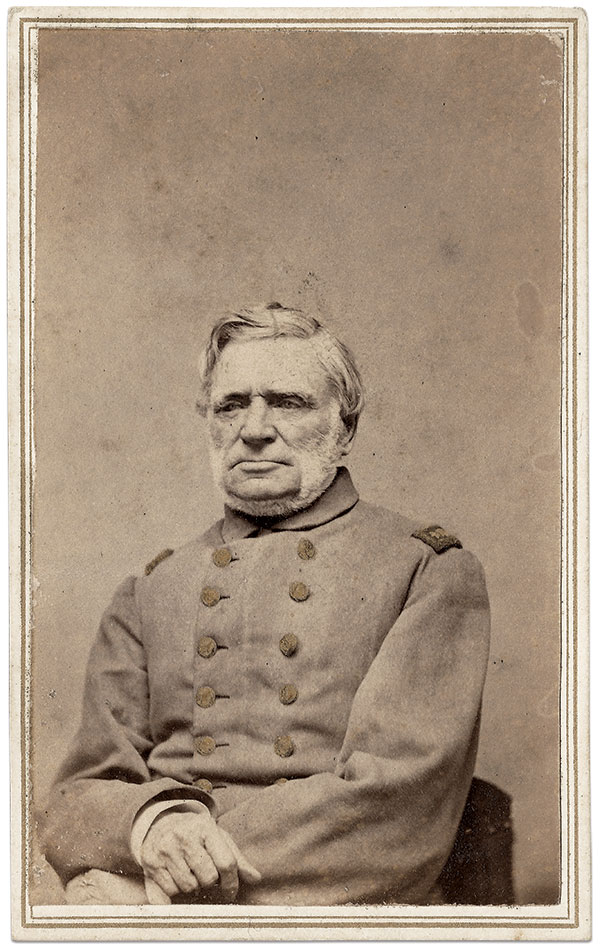
Capt. Josiah Tattnall (1794-1871), A Savannah native and career officer in the U.S. Navy, he resigned his commission and soon received a commission as senior flag officer of the Navy of Georgia. He soon received a com- mission as captain in the Confederate Navy. He is perhaps best known for his order to the burn his vessel, the ironclad Virginia, on May 11, 1862, rather than risk her falling into the hands of Union forces.

James New Stubbs, a law student from Gloucester County, Va., and a graduate of William and Mary College, began his war service in his local militia organization, the Gloucester Artillery, also known as the Red Shirts. He was soon detailed for duty in the Signal Corps, where he eventually rose in rank to major. He went to Texas with Gen. John Bankhead Magruder in 1862, and remained with him until the close of the war. Stubbs rendered valuable service in the capture of the warship Harriet Lane off the Galveston coast in 1863. After the war, he returned to Virginia, finished his law studies and became an attorney. He went on to a long career as a state legislator and educator. He died in 1919. His wife, Eliza, and four sons survived him.
SPREAD THE WORD: We encourage you to share this story on social media and elsewhere to educate and raise awareness. If you wish to use any image on this page for another purpose, please request permission.
LEARN MORE about Military Images, America’s only magazine dedicated to showcasing, interpreting and preserving Civil War portrait photography.
VISIT OUR STORE to subscribe, renew a subscription, and more.

